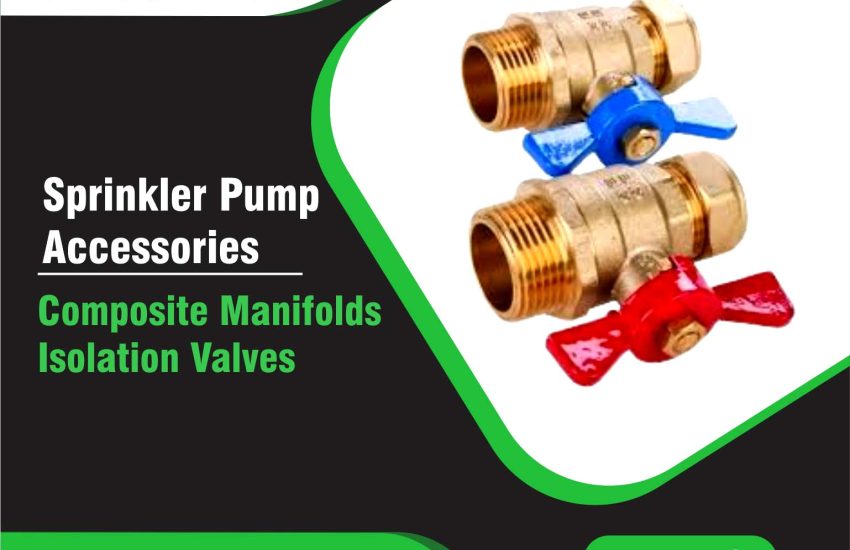Composite Manifolds Isolation Valves are essential components in fluid control systems. They allow operators to isolate sections of piping for maintenance or repair. Made from advanced composite materials, these valves offer durability, corrosion resistance, and ease of use in various industrial applications. This article explores the specifications, features, and importance of Composite Manifolds Isolation Valves, providing key information for engineers, contractors, and facility managers.
What are Composite Manifolds Isolation Valves?
Composite Manifolds Isolation Valves are devices that isolate specific sections of a piping system when maintenance or repairs are needed. These valves control the flow of water, gas, or other fluids, allowing operators to shut off a section of the system while maintaining flow in other areas. Composite materials, such as fiberglass or plastic-based composites, make these valves highly resistant to corrosion, durable, and lightweight.
Key Specifications of Composite Manifolds Isolation Valves
1. Material Composition
Composite manifolds isolation valves use a combination of fiberglass, carbon fiber, or plastic-based composites. These materials offer significant advantages, such as:
- Corrosion Resistance: Composite materials resist corrosion caused by chemicals, water, and harsh environmental conditions.
- Lightweight Design: These valves are lighter than metal valves, reducing installation time and labor costs.
- Increased Durability: The robust construction of composite materials ensures long-lasting performance under high pressures.
2. Pressure Rating
Pressure rating refers to the maximum pressure a valve can safely handle. Composite Manifolds Isolation Valves typically have pressure ratings from 150 psi to 300 psi, making them suitable for a variety of applications, from residential plumbing systems to large-scale industrial systems.
3. Flow Capacity
Flow capacity determines how much fluid a valve can handle. Composite Manifolds Isolation Valves generally manage flow rates ranging from 10 GPM to 500 GPM. The valve size influences its flow rate. Larger valves handle higher flow rates, making them suitable for residential, commercial, and industrial applications.
4. Size and Configuration
Composite Manifolds Isolation Valves are available in sizes from 1 inch to 6 inches in diameter. They can come in single-port or multi-port manifolds, depending on system requirements. Multi-port manifolds allow control of multiple fluid flows through a single valve, providing flexibility.
5. Temperature Rating
These valves perform well across a temperature range of -20°F to 180°F (-28°C to 82°C). This wide range makes Composite Manifolds Isolation Valves suitable for both hot and cold fluid applications in various industries.
6. Actuation Type
Composite Manifolds Isolation Valves can be actuated manually or automatically. Available actuation types include:
- Manual Actuation: Operators control these valves by hand.
- Electric Actuation: Electric motors automate valve operation, providing precision.
- Pneumatic Actuation: Compressed air operates these valves, commonly used in industrial settings for faster and more accurate control.
7. Seal and Gasket Material
Valves use seals and gaskets made from durable materials like EPDM (Ethylene Propylene Diene Monomer) or Viton. These materials prevent leaks and maintain tight seals, ensuring that the valve functions properly under extreme temperatures and pressures.
Features and Benefits of Composite Manifolds Isolation Valve
1. Corrosion Resistance
Composite materials offer superior resistance to corrosion compared to traditional metals. These valves perform well in environments exposed to chemicals, saltwater, or other corrosive substances. Their corrosion resistance leads to longer service life and reduced maintenance costs.
2. Weight Reduction
Composite materials are much lighter than metals, making the valves easier to handle during installation. This weight reduction results in lower labor costs and faster installation.
3. Durability and Longevity
Composite Manifolds Isolation Valve are designed to handle high pressures and harsh conditions. Their durability ensures reliable performance over an extended period, even in demanding environments.
4. Improved Flow Control
These valves provide precise control over fluid flow. Operators can isolate specific sections of a piping system with minimal disruption. This functionality is particularly beneficial when isolating fluids in critical applications without affecting the entire system.
5. Easy Maintenance
Composite valves are easier to maintain than metal valves. They resist wear, scale buildup, and other forms of degradation. Replacing seals and gaskets is simple and doesn’t require specialized tools, leading to cost-effective maintenance.
6. Versatility in Applications
Composite Manifolds Isolation Valves are versatile, making them suitable for various applications, including:
- Water Treatment Plants
- Chemical Processing
- Oil and Gas Industries
- Irrigation Systems
- Residential and Commercial Plumbing
These valves can handle various fluids, pressures, and temperatures, making them suitable for a wide range of industries.
Installation and Maintenance of Composite Manifolds Isolation Valve
1. Proper Installation
Install Composite Manifolds Isolation Valve according to the manufacturer’s guidelines. Proper installation ensures that the valve functions as expected and prevents leaks. Certified professionals should handle the installation to meet local plumbing codes and safety standards.
2. Routine Inspections
Routine inspections are necessary to ensure proper operation. Inspect the valves for leaks, wear, and other signs of damage. Regular maintenance helps prevent unexpected failures and ensures reliable performance.
3. Repairs and Replacements
Over time, valves may require repair or component replacement. While composite valves are durable, seals and gaskets may wear out. Use genuine replacement parts to maintain optimal performance and extend the valve’s life.
Conclusion
Composite Manifolds Isolation Valve are a vital part of fluid control systems across many industries. Their corrosion resistance, lightweight design, and long service life make them an excellent choice for systems that require regular maintenance or operate in harsh conditions. Understanding the key specifications, features, and benefits of these valves helps engineers, contractors, and facility managers select the right valve for their applications.


